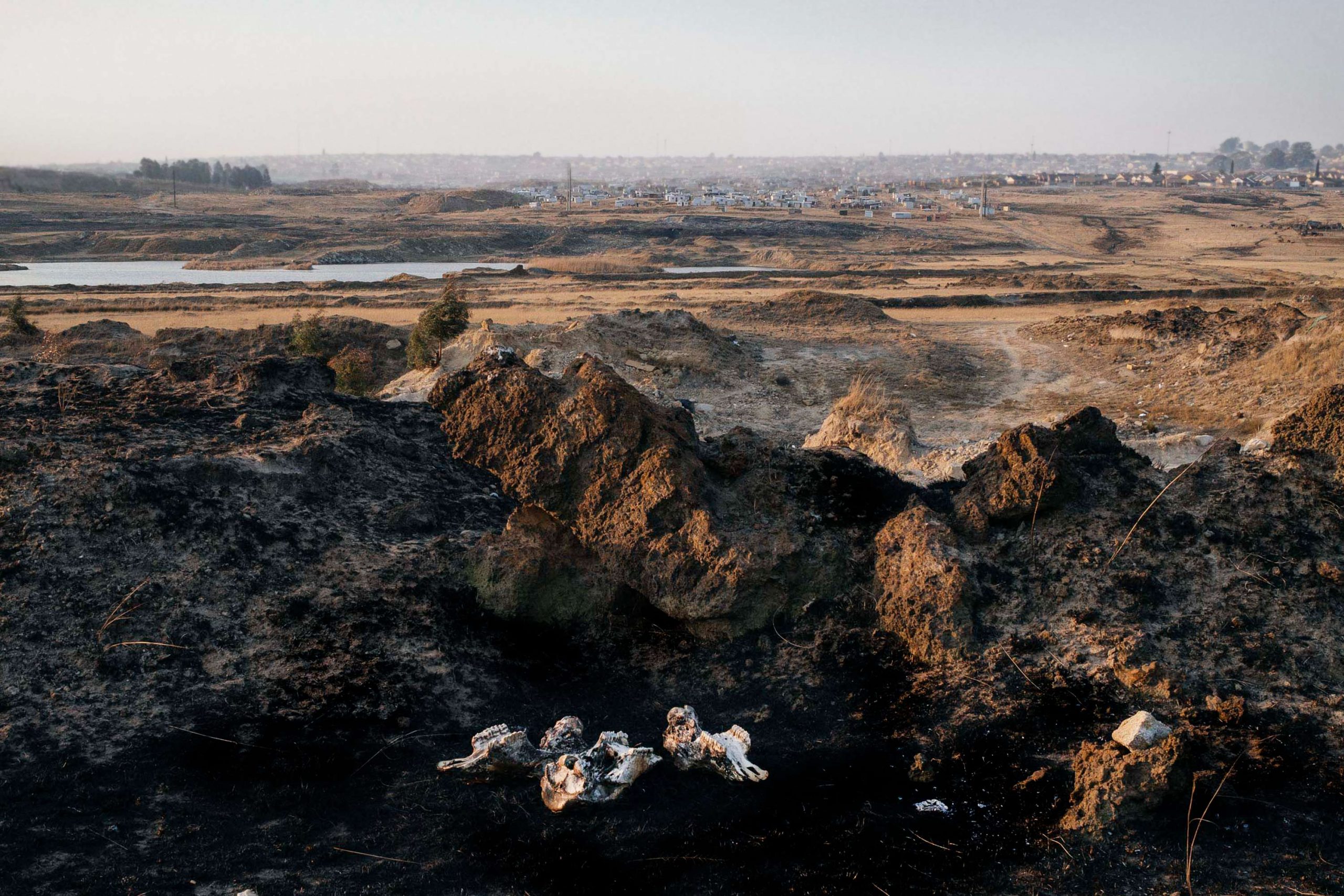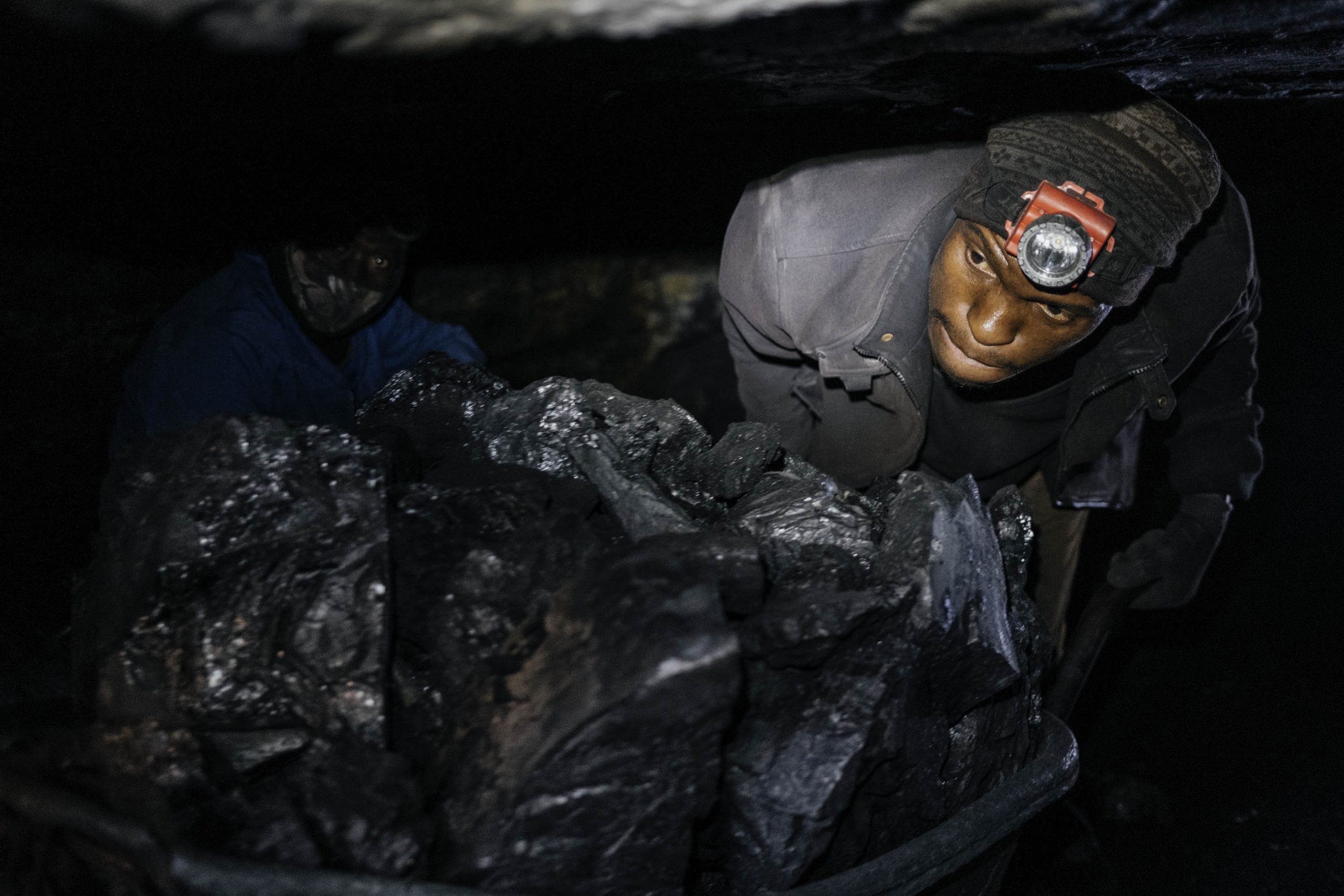Photo Essay | Wesselton’s coal-mining scars
Impoverished communities in Mpumalanga know all too well that life near the coal mines, whether they’re active or abandoned, means danger, pollution, illness and even death.
Author:
30 October 2020

Wesselton lies on the northern outskirts of Ermelo, a town in the Highveld area of South Africa’s coal-rich Mpumalanga province. The township is hemmed in on both sides by abandoned and unrehabilitated coal mines. To the southeast, the landscape is scarred by the ripped earth, mine pits and polluted tailings left by the disused Imbabala mine, while to the northeast are the abandoned shafts of Golfview mine, where underground fires are burning in the coal seams, and wetlands have been polluted.
Imbabala was abandoned in 2011 when the Department of Mineral Resources ordered operations to stop because the mine was operating without a water-use licence. Only R600 000 is available for the site’s rehabilitation, but to date the funds have not been released. Anker Coal & Mineral Holdings, the owners of Golfview mine, avoided its liability for rehabilitation by entering into business rescue and shutting down operations in 2015.
While the mining companies have moved on to greener pastures, the Wesselton community has been left exposed to the multiple hazards of polluted rivers, toxic mine tailings and a landscape dotted with blackened pits and unstable shafts. Livestock are poisoned, people get sick and many residents have lost their lives, among them children playing in the abandoned shafts.
Podcast:
Many members of the older generation in Wesselton know these mines intimately, having worked on them before they closed. Years of exploitative work both underground and in pits have left many with lung diseases such as silicosis and tuberculosis.
Poverty and high unemployment have seen the younger generation turn to the abandoned mine shafts to dig out coal as a means to make a living. Referred to informally and pejoratively as zama zamas (a colloquial term stemming from isiZulu that means “to try and try again”), these unlicensed miners are generally perceived in a negative light and treated as criminals.
Preferring to call themselves artisanal miners, they do not regard their work as illegal. Rather, they view it as taking back ownership of the mineral riches in the earth that was rightfully theirs before foreign mining companies pushed them off the land and exploited their labour.
Related article:
Instead of being persecuted and arrested by the authorities, they want government support so that their mining operations can be formalised. Recognition and formalisation would enable a safer working environment, provide access to formal coal markets and help protect them from unscrupulous middlemen.
For a community so harshly affected by past coal mining practices, such recognition and assistance would be just. But the government has largely been unwilling to engage with them and they remain persecuted and in a precarious position.
And so the residents of Wesselton are left to fend for themselves. On the one hand reliant on coal for an income and a source of cheap fuel for cooking and warmth, but on the other ravaged by the dangers, sickness and pollution left by the legacy of coal mining in the town, they are trapped in a catch-22.













